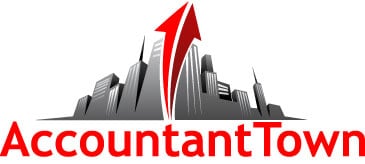Accounting Principles – Balance Sheet
Some people would refer to a balance sheet as a statement of assets and liabilities. This is close to being true – while a balance sheet contains the same items as the statement of assets and liabilities the formatting are entirely different.
What is the Balance Sheet?
A statement of assets and liabilities may be prepared from any data available, and not necessarily from books. “A statement of assets and liabilities” is the proper title under which the resources and liabilities of a concern whose books have been kept by single entry may be arranged. A balance sheet is a concise statement of ledger accounts. A balance sheet has a specific presentation it must follow after the collection of all the nominal balances in the profit and loss summary, compiled from a set of books kept by the double-entry principle, containing assets, liabilities and proprietorship of the concern at a particular moment.
Arrangement of the balance sheet
—The method of arrangement in a balance sheet, while ultimately is not extremely important, is nevertheless a subject of controversy. With some say the arrangement is unimportant, others say the importance of the assets that yield income is prominently displayed on the balance sheet. These would begin with fixed assets, such as plant, macliinery, buildings, tools and the like, winding up with cash as the last item. Some writers adopt the plan of arranging the assets and liabilities in the order of their realization and liquidation. The assets that are most easily realized on or most quickly convertible into cash are placed first; such as cash, notes receivable and the like. The same plan is followed on the liability side: Bank overdrafts, loans payable, accounts payable and the like, winding up with immaterial assets, such as good will and franchises, on the asset side, and surplus and undivided profits on the liability side. The method to be adopted depends entirely upon the audience the balance sheet is intended to be disclosed to and the regulatory body governing it.
Assuming regulatory concerns are not present, the order should be classified based on the audience. if the balance sheet is to show how strong the concern is for the purpose of earning revenue, it stands to reason that importance will be attached to assets which are the cause of the income, such as plant, machinery, tools, etc. On the other hand, if the balance sheet is to show how strong the concern is financially—and this is the general purpose for which balance sheets are prepared—the current assets should be classed first. The illustration on page 100 shows arrangement of assets in the order they would be realized upon and the liabilities in the order of liquidation. The last mentioned arrangement is followed throughout the text-book. The main distinction between a profit and loss account and a balance sheet is that while the profit and loss account shows the progress or the retrogression of the business during a certain period of time, the balance sheet shows the financial position of the concern at a particular moment of time.
English accountants and writers place the assets on the right-hand side of the balance sheet and the liabilities on the left-hand side. American practitioners and writers follow just the opposite plan. There can be little question about the correctness of the latter plan. Mr. Lisle, an English writer, summarizes his views in the following statement: “Why in the process the assets which are on the debit side and the liabilities, which are on the credit side, in the ledger as according to the principles of accounting they ought to be, should change places, it is impossible to justify.” The custom undoubtedly arose as early as 1862, when the “English Companies Act” was passed, and which must have been prepared by people unacquainted with the theory of accounts, for if the profit and loss account, which is also taken from the ledger, is not transposed, why should the balance sheet, taken from the same source, be treated differently?
Access the contact form and send us your feedback, questions, etc. We are always welcome to help someone out. You can also contact us if you wish to submit your writing, cartoons, jokes, etc. and we will consider posting them to share with the world! The Facebook and LinkedIn groups are also good areas to find people interested in accounting like yourself, don’t hesitate to join as everyone of all levels are welcome to become part of the community.

